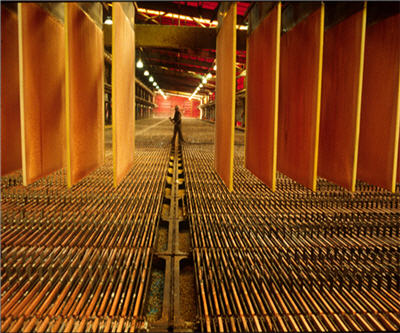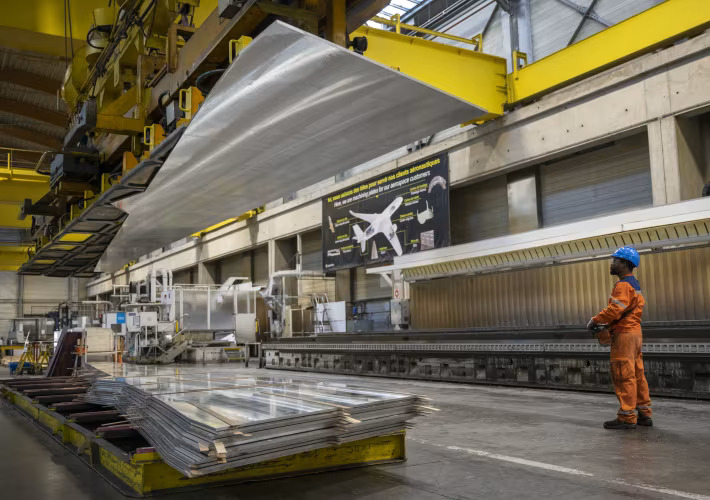Copper price: Lower for longer

Study shows copper price fall matches previous down-cycles going back to 1975, but expect a long painful slog before a sustained recovery
It’s been a brutal November for copper which despite a nice bump on Tuesday is down more than 10% during the month.
In New York on Tuesday copper gained 2.5% to $2.06 a pound after coming dangerously close to dropping through $2.00 on Monday, the lowest since March 2009.
Copper traded below the $2-level for a brief seven months at the height of the global financial crisis. It took just 18 months to climb its way back to a record of nearly $4.50.
Is today’s big bounce off the psychologically important $2-level (in the absence of any really positive development on commodity markets) the first signs of a bottom in the copper market?
Barclays recently put out a research report that compared copper and crude oil cycles going back to 1975.
Compared to previous downturns – the 1980s global economic slump, the late 1990s Asian crisis and the global financial crisis of 2008-2009 – the current bear market in oil and copper is already more severe.
Relative to their rolling five-year averages, the November average price for copper is down 36% (and at today’s price it’s just over 40%) and more than 50% below for oil. Copper’s decline matches the average maximum decline of 36% during the previous downcycles while oil is clearly overshooting on the downside, according to the study.
But the depth of this bear market is just one half of the story.
Comparing the length of time trading at cyclical lows compared to previous periods indicated the copper market may be “bumping along the bottom” for a while still.
Copper has now traded at 20% or more below its prevailing five-year average for 10 months. According to Barclays during previous downturn the red metal spent 15 months in a bear market.
Put another way – copper (and oil) should be performing much better and not making fresh lows if we were witnessing a sustainable recovery.
Dane Davis, commodities research analyst at Barclays, tells MINING.com that given the heights reached during the China-induced boom it is to be expected that the lows may be lower (and longer):
“It took a decade for global copper demand to go from 15 million tonnes to 22 million tonnes. That’s an increase of 7 million tonnes. During this time China’s demand has gone up 8 million tonnes. So take China out of the picture and global demand has actually been flat or declining.”

From Barclays: Primed for crisis, or bottoming out
This year’s mini rallies in the copper price came on the back supply cuts, not a pick up in demand. In fact news out of China has only deteriorated and Davis believes November’s slide in the copper price was the result of a fear in the market that there won’t be any more supply cuts.
The world’s top producer Codelco said as much last month announcing that it will focus on cost cutting, not reducing output. Over and above belt-tightening miners have enjoyed substantial cost savings through the drop in the oil price and weakening currencies. That’s kept marginal producers in the market for longer than expected.
“That’s the problem with the cost curve. Not only does it rely on historical data, it cannot properly take into account state-owned actors such as Codelco, which doesn’t always operate on purely commercial grounds,” says Davis.
Recovery for the copper price following previous downturns came on the back of robust economic growth.
The recovery from the Asian financial crisis took place on the back solid global growth, averaging over 4.5% from early 1999 into 2000 while the 1980s lows were also followed by an above trend growth spurt.
From the second quarter of 2009 onward global growth was 4%, 5.3%, 5.1% and 6% and according to the Barclays research, restocking all the way through copper distribution chain “magnified the underlying demand improvement and resulted is sustained periods of very strong demand growth.”
Few are predicting such a strong recovery this time around. And as for copper, Davis sees no collapse, but global demand would peak some time over the next five years. A decline after that – including in China – is on the radar.
{{ commodity.name }}
{{ post.title }}
{{ post.date }}




7 Comments
Steve Canby
It is already too late for many companies who should have thought long ago about productivity enhancement, cost cutting and production increasing to ride this storm, Production profits are getting more and more narrow. Exploration is DEAD. For those who are still in the business, it’s time to let the productivity specialists study the numbers properly and admit they need to make changes to survive (or to continue exploration)
brettles
yes you are right steve dead right
EMILIO ZUNIGA
Going forward, the best one can do is to look at the rate of depletion at current copper consumption, and figure out if at $2.5/lb we can have new production to match demand. This implies cero growth in copper demand.
Honest Misanthrope
Two thoughts.
1- The “if you take China out of the picture” argument is a number-massaging fallacy, convenient to convey a point but erroneous in logic. Some countries/regions went up, others went flat or down. You can’t single out one country’s growth without mentioning the others’.
2- Throughout the history of humanity, leaders of economic growth have rapidly grown up to some maturity, then have been replaced by other regions or countries. Think Japan&Korea of the 1970s-1980s as a recent example. After China, it might just be India or some other regions.
rayban
I recycled some CU a 3 months ago . Stay in line , workers have radios , 2 officers of local law enforcement guarding and keeping people in line and right . Place has a few dozen employees and round the 12 hour clock actual local officers of our city government in uniform , inside and out .
Copper gets recycled so it depends on economic expansion and growth or technological change . Unless electric ie Copper gets more common or heavier work load …….
Pat Wood
Codelco production will decline in 2016-2020.
The decline will accelerate.
Chuquicamata open pit is depleted in 2017, and they are forced to rely on lower-grade stockpile and feed from the neighboring Radomiro Tomic mine around that time. Sulfide grades are lower at Radomiro Tomic. About 1/4 of Chuquicamata material. Chuqui is going underground, but the project won’t be completed until 2019-2020 at best, and is facing a 7 yr. ramp-up to output levels that resemble 2014-2015 output from this mine. All of this information is from Codelco.
As for that operation, it’s oxide ore is quickly depleting. Codelco, back in 2011, had planned on closing the oxide circuit at R/T in 2016. However, the new concentrator has not been completed yet, and won’t be until 2019. Whatever material they process thru the oxide circuit is progressively lower grade. The concentrator is being held up by indigenous locals who don’t want it. It likely won’t even break ground until late 2016 (construction), and won’t be ready until 2019. Codelco recently reduced the size of the concentrator by 1/2 (100,000 mtpd). It won’t be fully ramped up until 2022. They are building a desalination pipeline to the site, as well. Needless, R/T’s better oxide ore will long be depleted by then, and they’ll be forced to squeeze copper out of ‘road gravel’ long before this Phase II concentrator is even running.
As for new mine at Ministros Hales, the mine is ramped-up, and is operating at peak output. Thus, it’s growth will no longer camouflage slumping output from reported statistics on Codelco’s major mines at Cobre Norte.
All three mines comprise the Cobre Norte complex.
As such, combined output will fall sharply in the years to 2020 at Codelco. They even have charts on what the production profile looks like in the absence of completion of their major projects. All of their major mine life extension projects will be behind schedule, and over-budget.
That analysts are not following this more closely, only reveals how shallow their analysis really is regarding predictions of supply output over the 2015-2020 period.
Codelco will be lucky to avoid a drop of 400,000 mt annually at their combined operations by 2017-2019, vs. what volumes they produce today.
All of this information is buried on Codelco’s website, in analysis of various projects they are scrambling to complete. Dark days ahead for this producer of copper.
Dylan E McFarlane
Big data, artificial intelligence and Herman Aguirre coming soon to a copper mine near you!